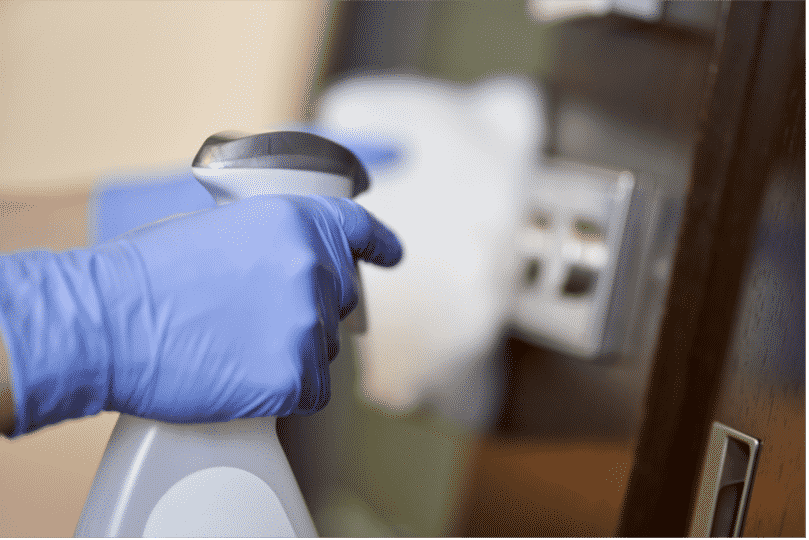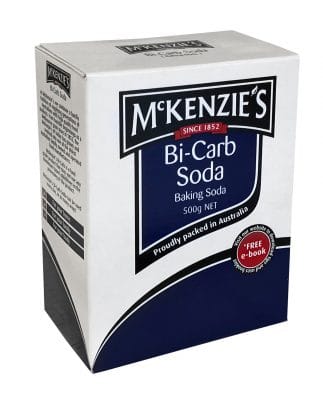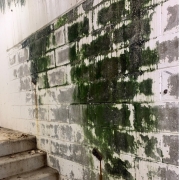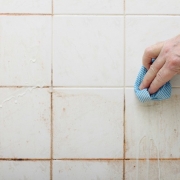Does vinegar kill mould?
If you have mould in your home, you know how hard it is to get rid of—and how much damage it can do.
Mould grows on surfaces like wood and wallpaper, but it can also grow inside the walls of your home. If you don’t deal with it quickly, mould can spread throughout the entire house.
When mould comes in contact with a surface, it releases spores that can float through the air and cause breathing problems and allergies. Mould also produces toxic chemicals that can cause permanent damage to your health. If you suffer from a serious lung disease like asthma or COPD, mould can be life-threatening!
Does vinegar kill mould?
The answer is yes, you can remove mould with vinegar—but it depends on the amount of mould, as well as what surface it’s growing on.
Here’s how to decide whether or not vinegar is the right solution for you.

How does vinegar kill mould?
Studies have shown that cleaning with a damp cloth and vinegar solution can be an effective method of cleaning mould from your home.
“Acetic acid (vinegar) is an effective mycobactericidal disinfectant that should also be active against most other bacteria.”
Source: https://www.ncbi.nlm.nih.gov/pmc/articles/PMC3940030/
Using household vinegar can be a cheap solution to mould and mildew removal as the acetic acid in the vinegar has an antimicrobial effect on the fungi found in mould.
However, although vinegar is effective against common household moulds, it has been found to be less effective against other types of fungi and the airborne spores they release.

Does white vinegar kill mould?
Yes, white distilled vinegar is the most effective commercially available vinegar solution found in most supermarkets.
The higher levels of acidity found in white vinegar kill more bacteria than other types of vinegar such as brown, apple cider, and wine vinegar.

How to use vinegar for cleaning mould
It is important to first discover the source of the mould problem and what is causing the increased moisture in the affected area. Without addressing the source of the mould problem, the mould will simply grow back over time.

What you will need
- White distilled vinegar with at least 5 percent acetic acid content.
- Non-porous gloves.
- Face mask.
- Protective eyewear.
- Spray bottle.
- Damp cloth or rag.
- Dry cloth.
- Soft bristle brush.
Instructions
- Make sure the area is well-ventilated to any respiration issues.
- Wear protective equipment, gloves, mask, and protective eyewear.
- Fill your spray bottle with equal parts white vinegar and water.
- Spray directly onto the affected area.
- Let the solution sit for at least an hour to react.
- Using your soft bristle brush, scrub the mouldy surface liberally until the mould is removed.
- For more porous surfaces you may need to use a thicker brush.
- Wipe away any remaining mould and debris with a damp rag.
- Dry the area thoroughly with a clean dry cloth and dispose of all cloths and brushes used.
When NOT to use vinegar for mould removal
Never mix vinegar with bleach or hydrogen peroxide as it produces toxic chlorine gas which can irritate your eyes and skin.

Although mould can treat mould problems in most cases, there are some surfaces that vinegar can potentially cause damage.
These include:
- Wooden surfaces such as hardwood floors, or wooden furniture.
- Stainless steel, aluminium, and copper surfaces.
- Waxed surfaces such as waxed furniture.
- Sensitive electronic surfaces, such as laptops, televisions, and phones.
- Stone surfaces, such as granite and marble.
How to prevent mould with vinegar
Moulds are fungi that grow in places where there is moisture. You can find them around leaks, pipes, and window frames. To prevent mould, you need to keep the humidity in your house below 50 percent.

Other steps you can take to prevent mould include:
- Look for signs of water damage or visible mould around water pipes and leaks.
- Try to keep your house well ventilated by opening windows regularly and using fans in your kitchen and bathroom.
- Repair or replace any faulty plumbing, windows, and sealants around your home.
- Use fungicides, or mould inhibitors on your household plants.
- Use the vinegar solution to remove any visible signs of mould before they grow.
Natural mould removal alternatives
If vinegar is causing you any skin or respiratory issues, there are other natural mould removal alternatives you can find around your home.
Clove Oil (Oil of cloves)

Clove oil can be found at most chemists and is an effective natural alternative for killing mould spores.
However, it can be toxic to humans and animals if ingested and is not recommended for use on limestone or marble surfaces.
Instructions:
- Mix ¼ teaspoon of clove oil and 1 litre of water into a spray bottle.
- Spray the affected area with the spray bottle in a light mist.
- Leave for 24 hours to dry.
- For more porous hard-to-reach surfaces, use a spare toothbrush to scrub.
Baking Soda (Sodium Bicarbonate)

Baking soda or bicarb soda is effective against most household moulds; however, it does not kill mould on non-porous surfaces.
Instructions:
- Mix ¼ teaspoon of baking soda with 2 cups of water in a spray bottle.
- Spray the affected area liberally and scrub with a soft bristle brush.
- Rinse the area.
- Dry thoroughly.
Tea Tree Oil (Melaleuca Alternifolia)

Tea tree oil can also be an effective solution for mould removal. Studies have shown that tea tree oil can be equally effective against mould as using 70% ethanol and vinegar.
Instructions:
- Mix 2 teaspoons of tea tree oil and 2 cups of water in a spray bottle.
- Spray the solution onto the mould affected area and leave for at least an hour.
- Use a brush or scrubber to clean mould and remove debris.
- Spray the area with any kind of household surface cleaner and leave it to sit for several minutes.
- Use a damp sponge to wipe away the remaining mould.
- Repeat if necessary and dry thoroughly.
When to contact the mould cleaning experts
If you have tried these methods and you still have signs of mould or mildew, there might be other issues causing a mould outbreak. It is best to contact a professional and seek advice on what you can do to address the problem and what may be causing it.

If you have a serious case of visible mould, you will likely have a serious case of hidden mould. A professional mould removal company uses the latest digital readers and technologies to locate this hidden mould.
If mould is not treated quickly by a qualified expert, it can cause serious health problems for you and your family.
Our expert technicians will inspect your property, locate the mould effected areas, treat the source of the problem, and make a prevention plan to free your home of mould.
Give the mould removal experts a call on 07 5546 8608 or get a FREE quote today!









